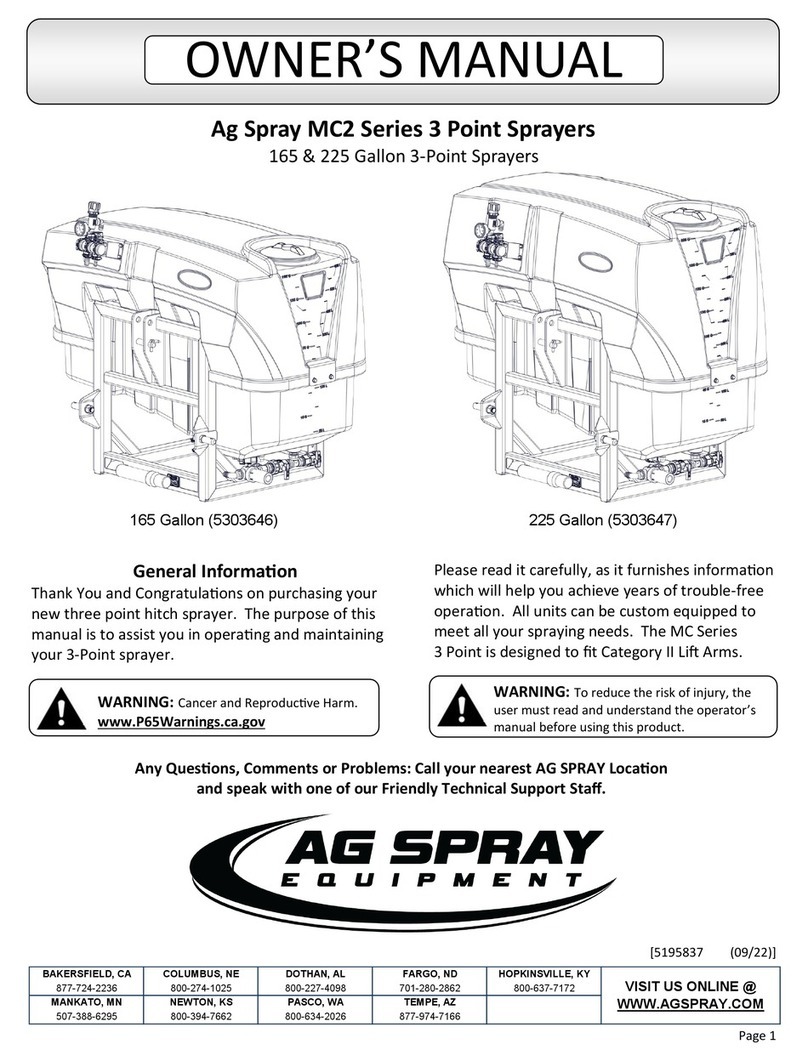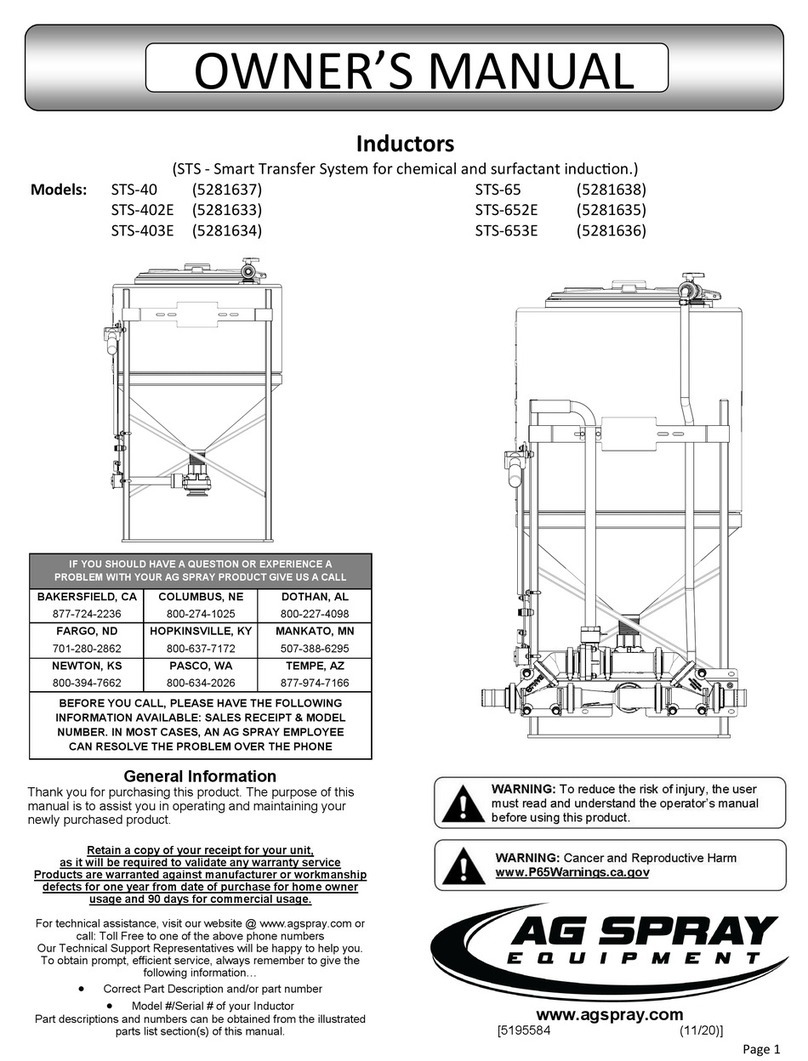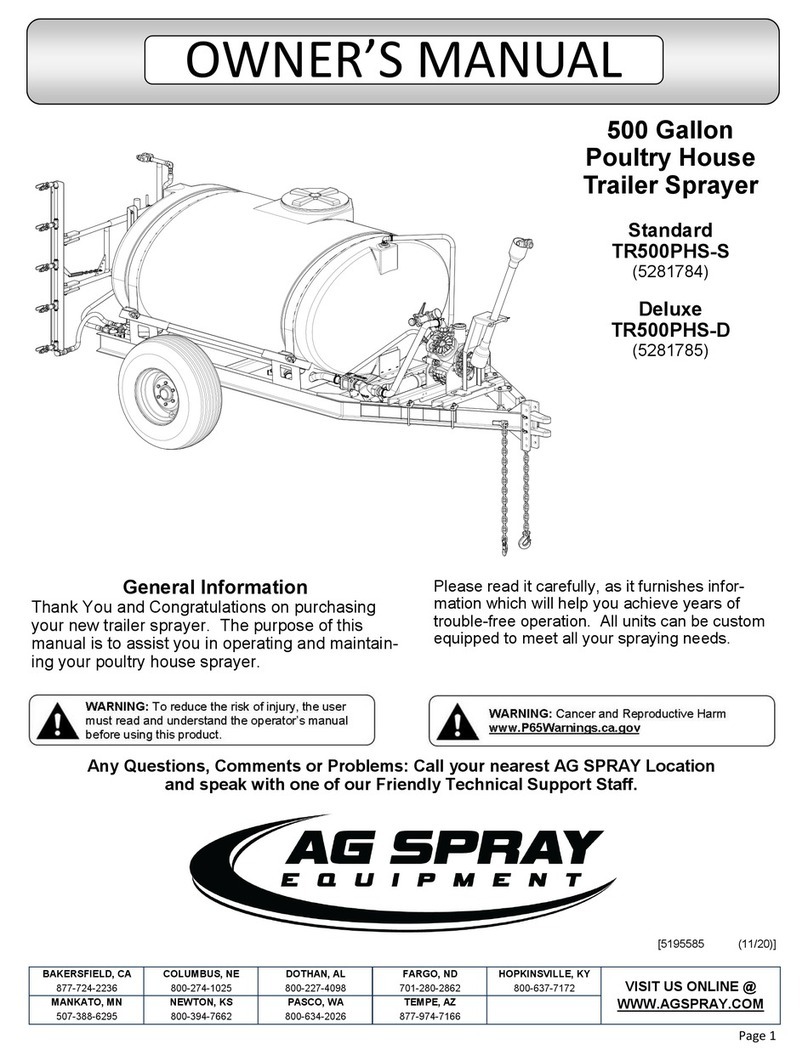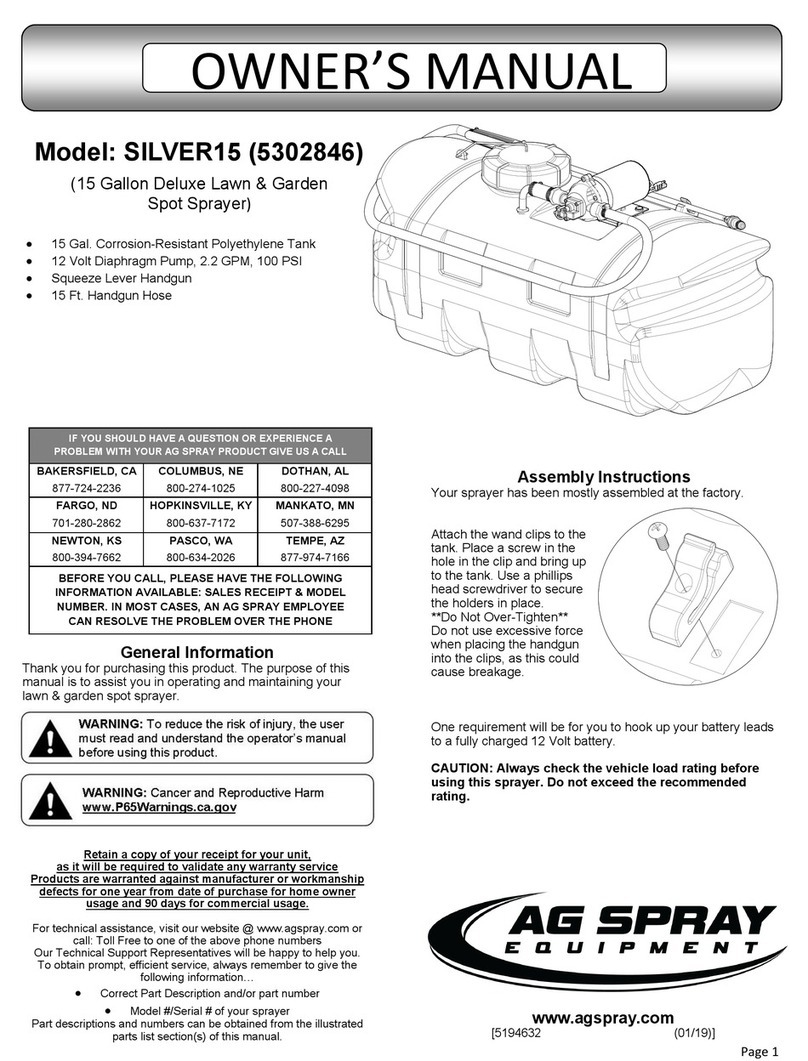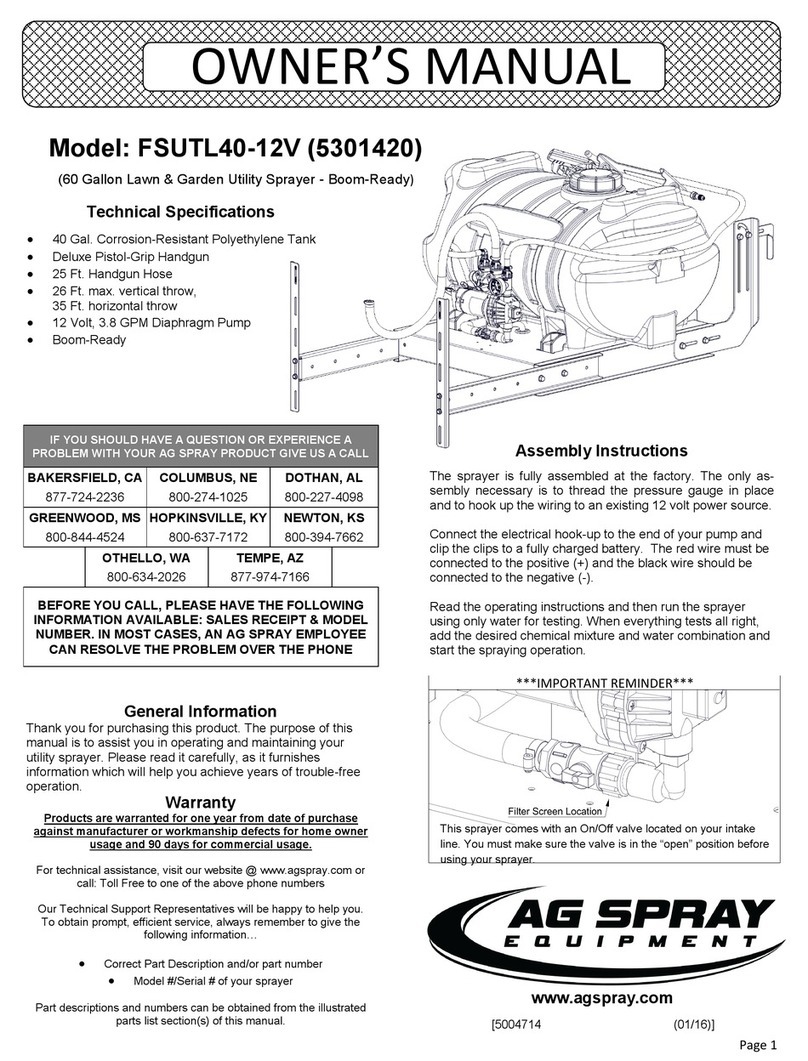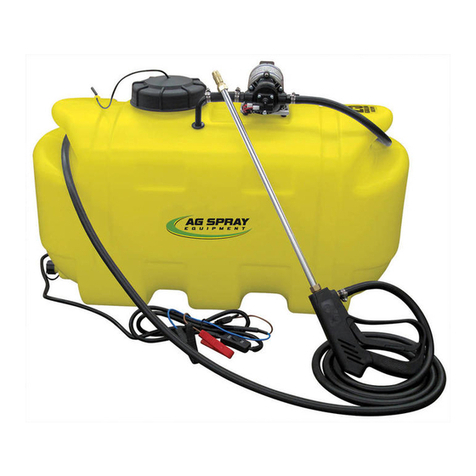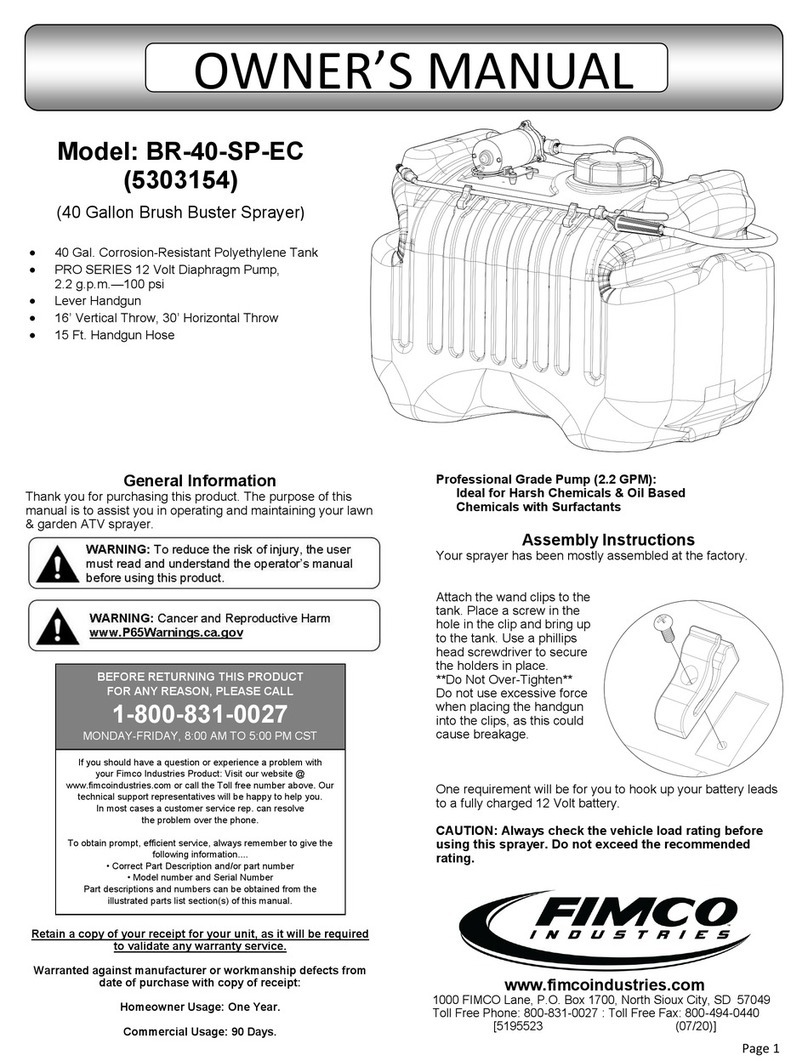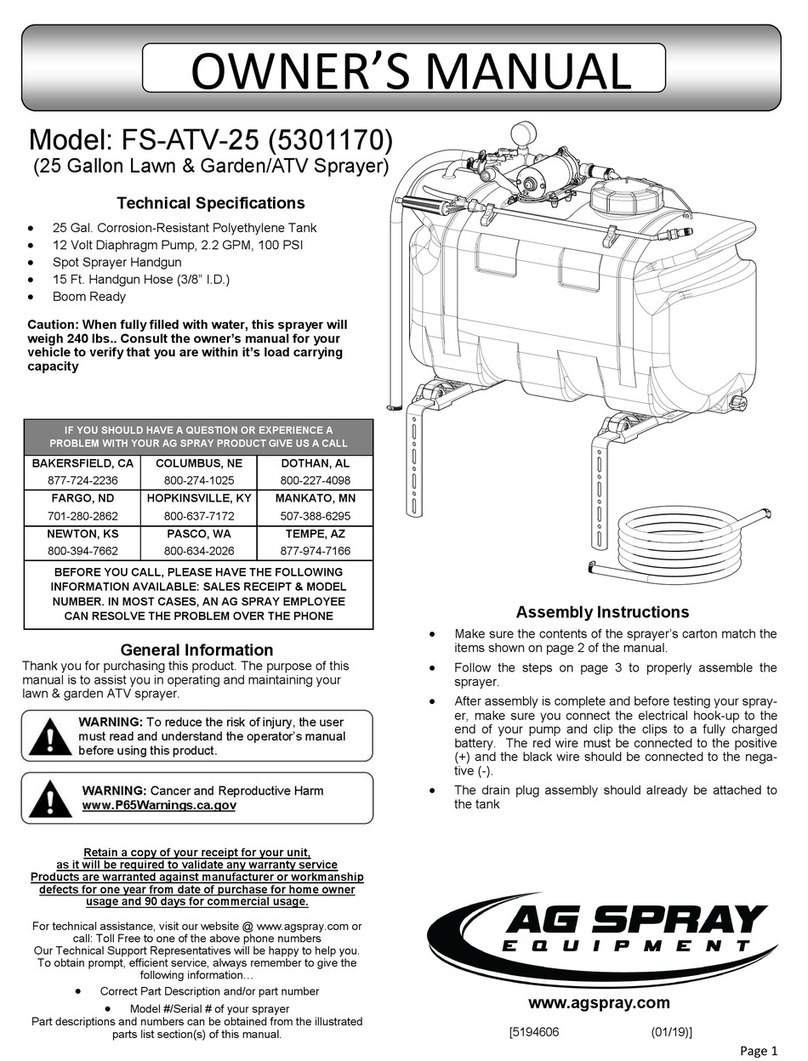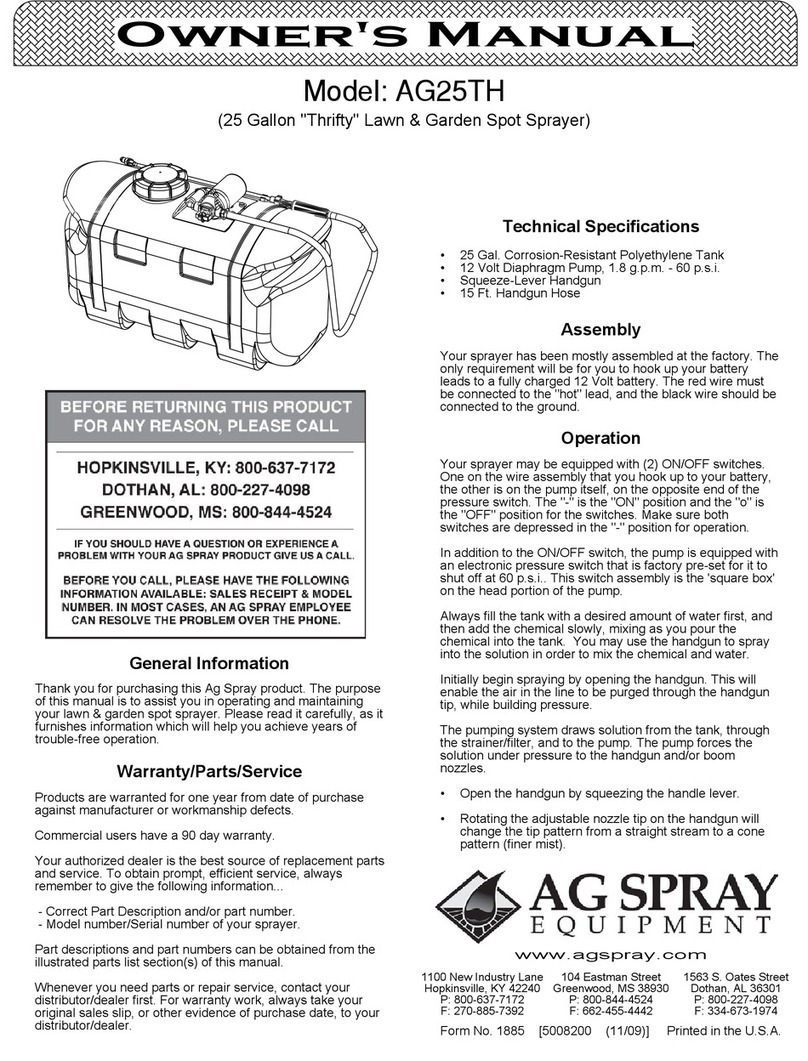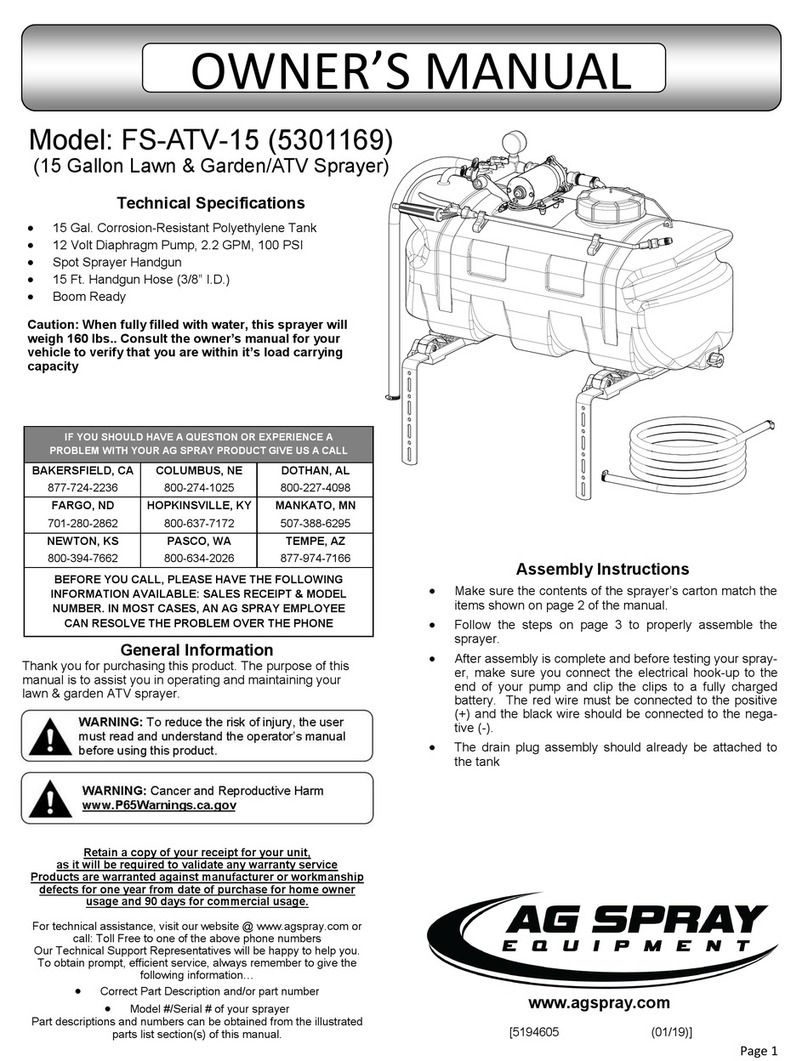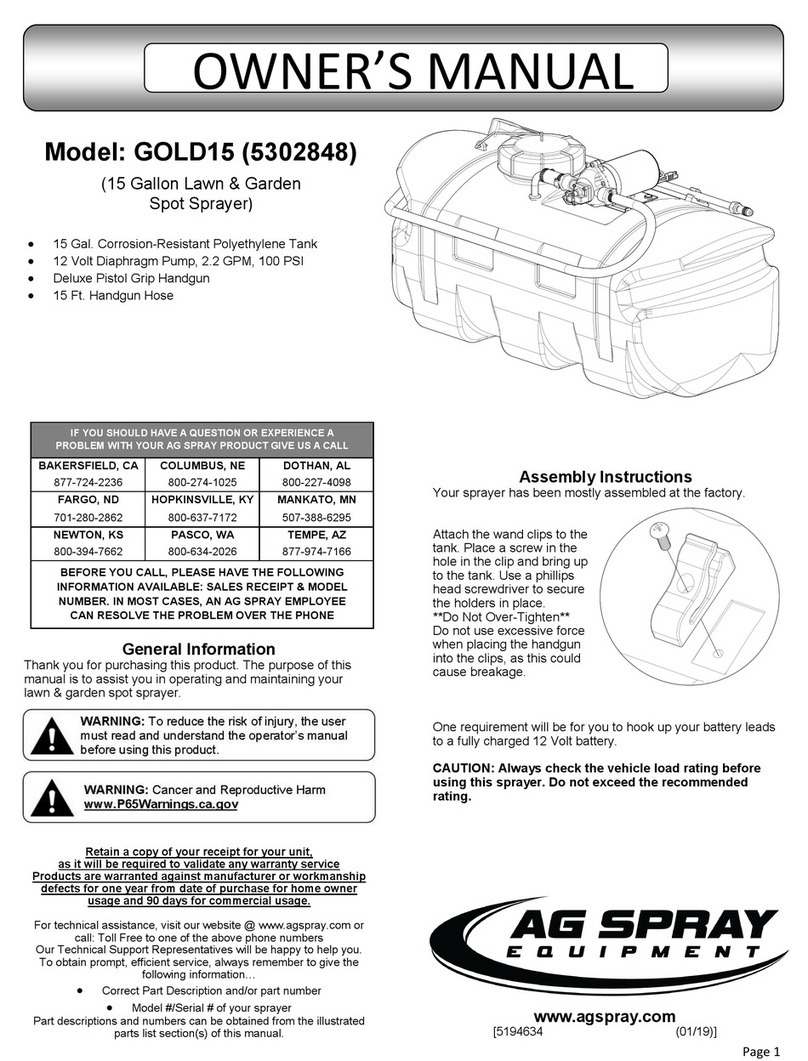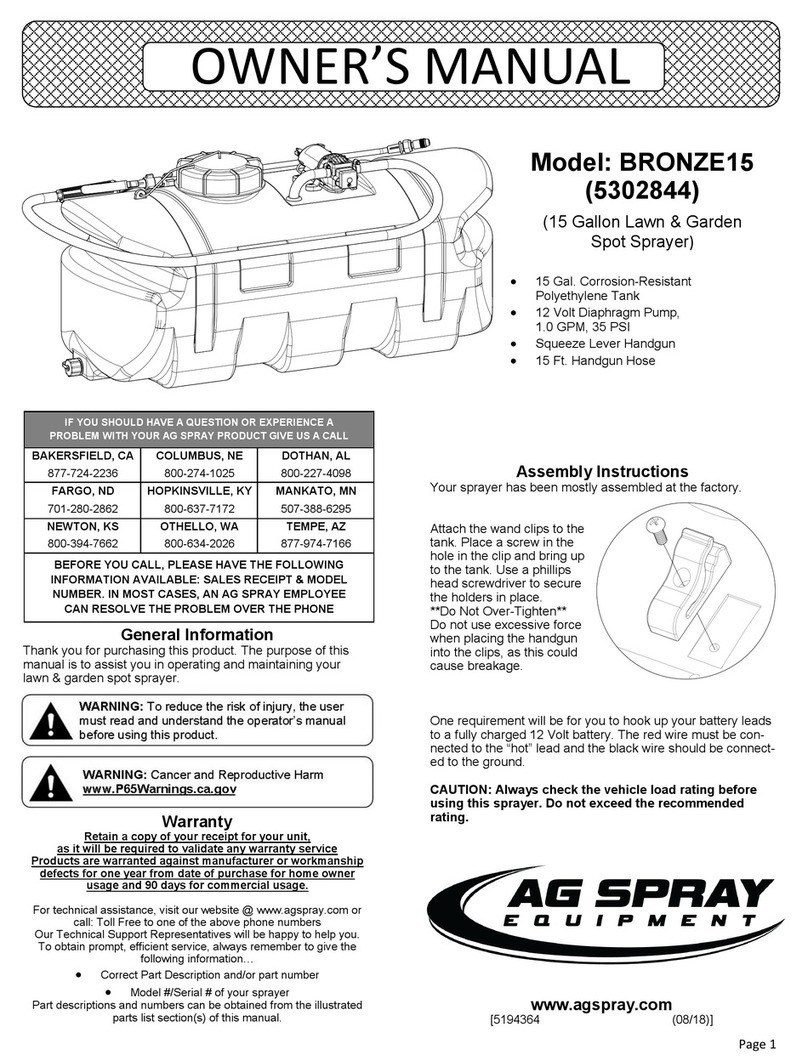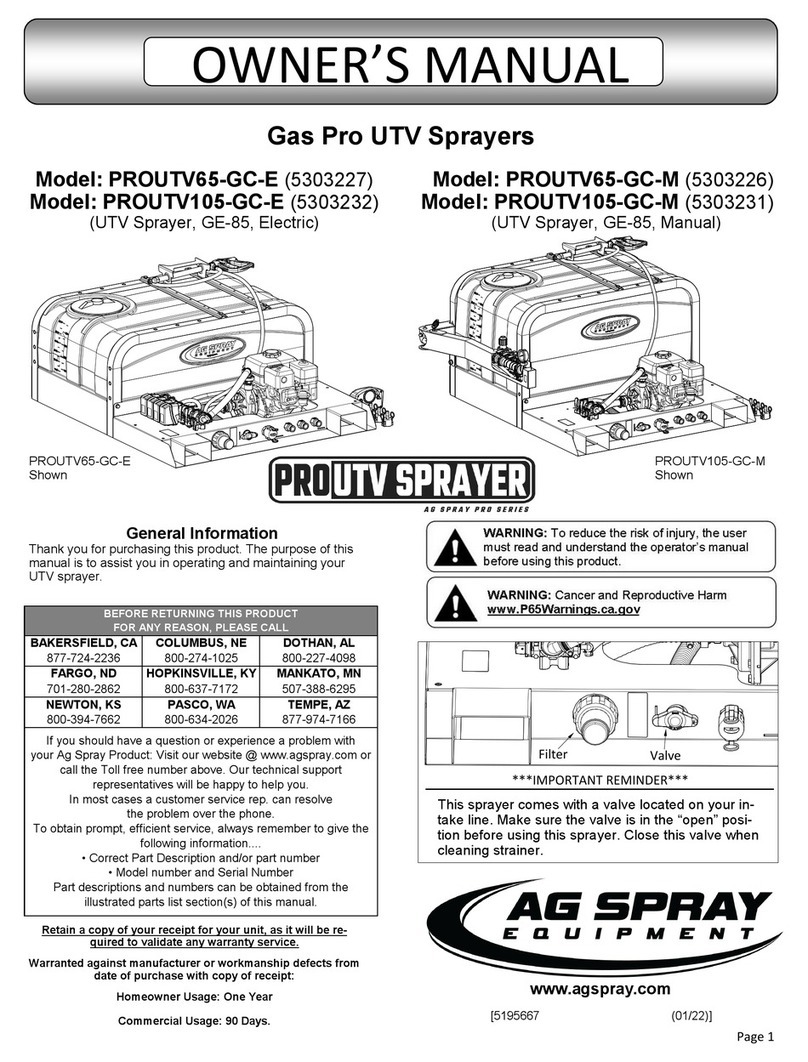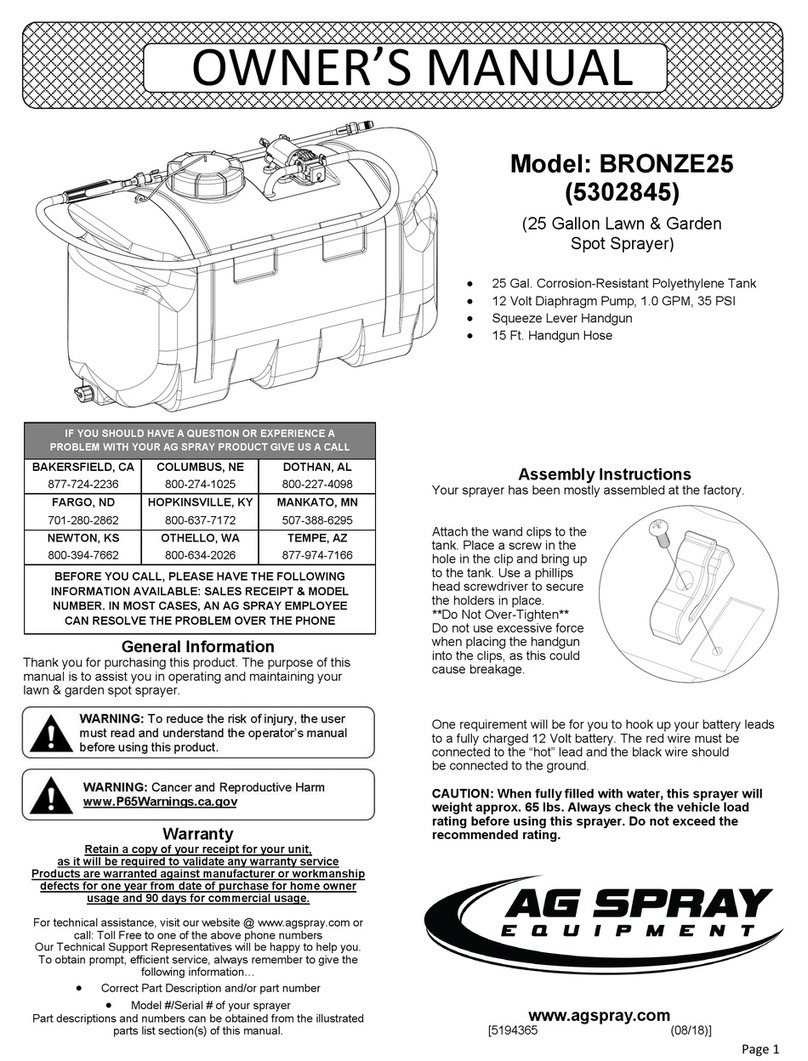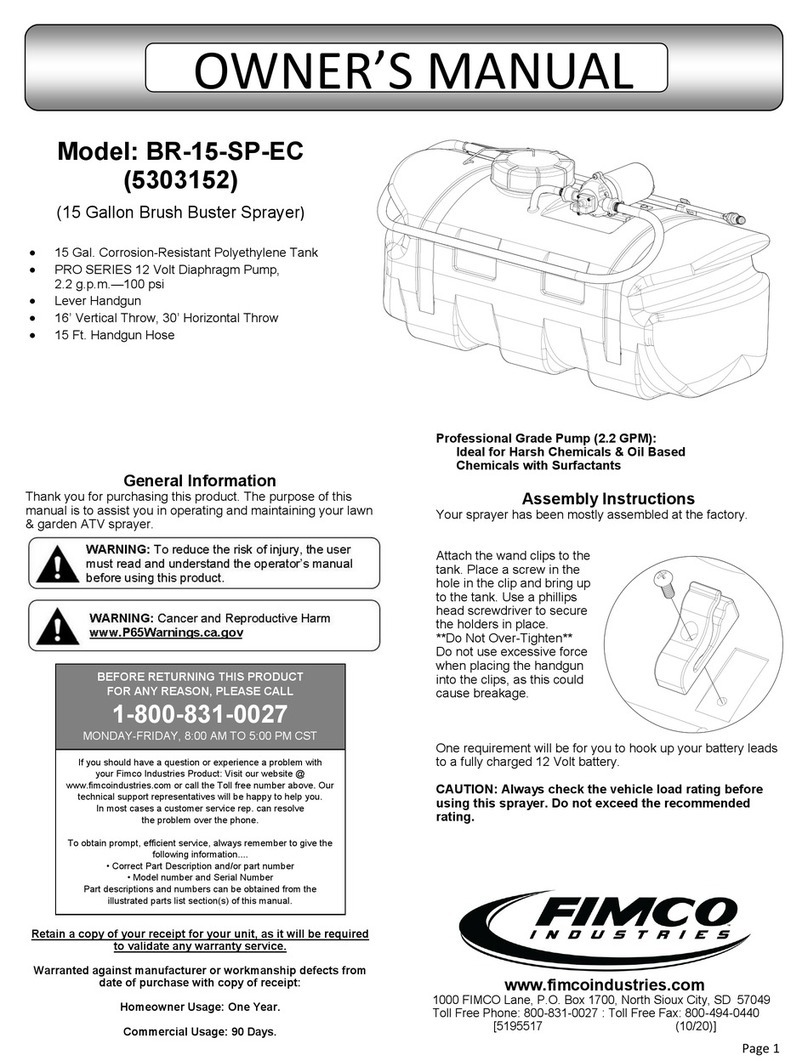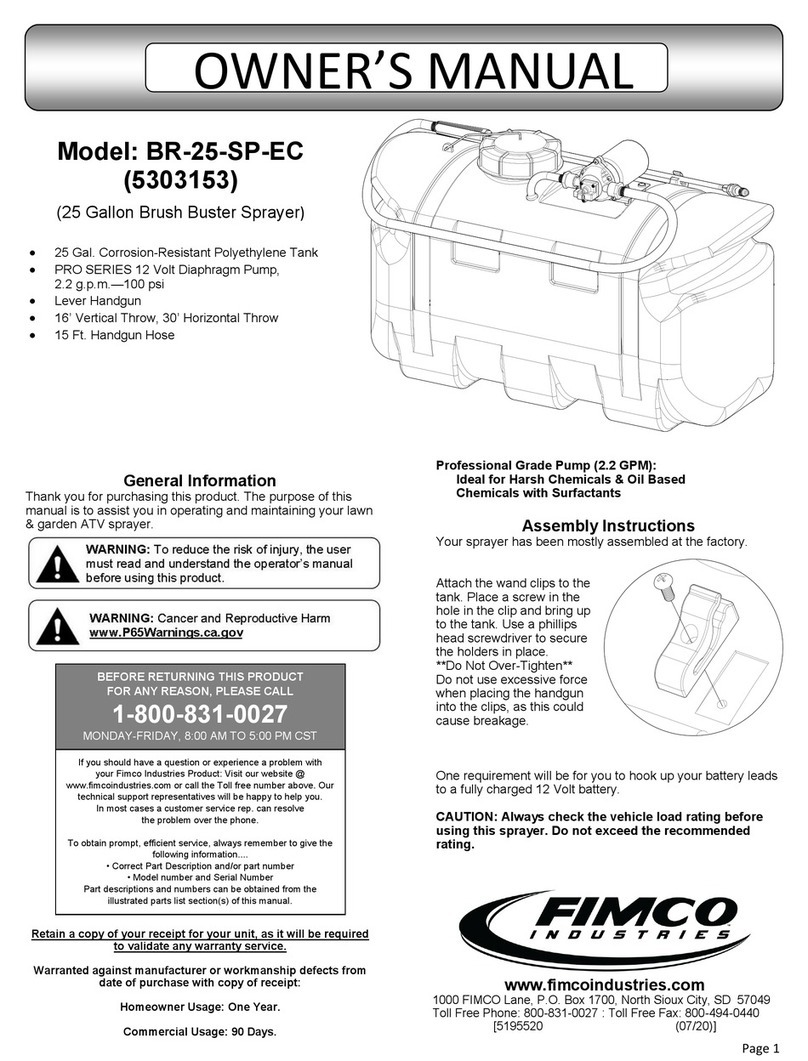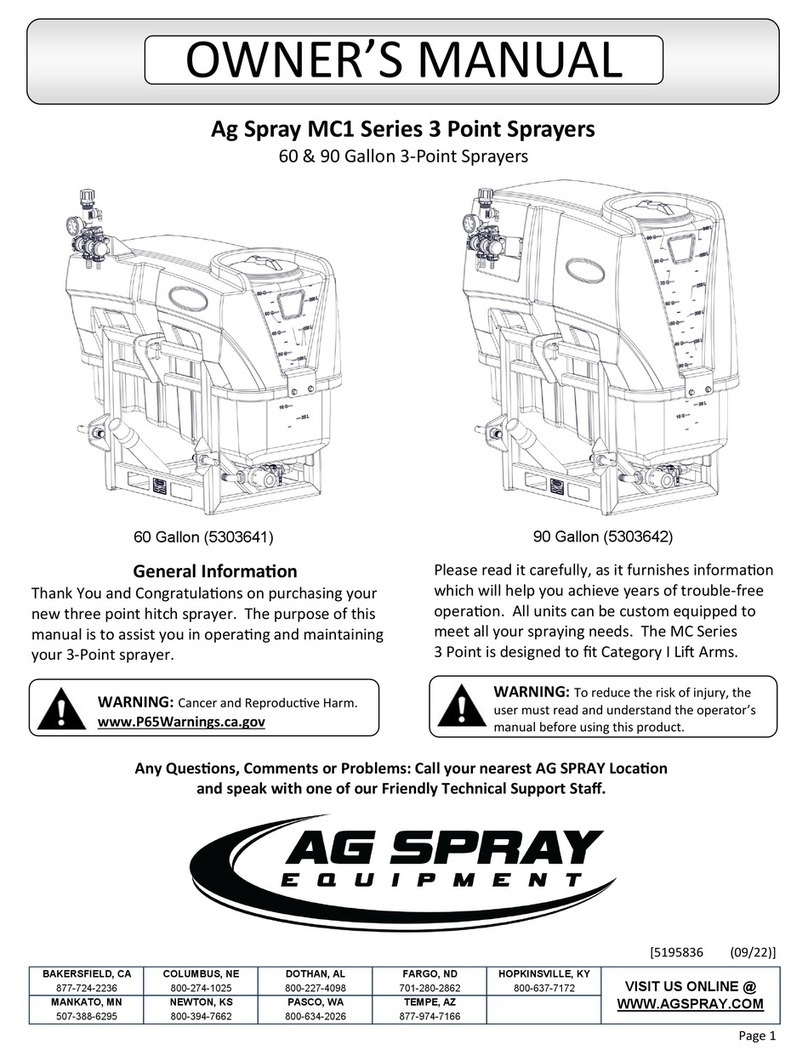Page 4
Using the Boom Nozzles
Four things must be considered before spraying with the boom.
How much chemical must be mixed in the tank.
Rate of spray (gallons per acre to be sprayed).
What pressure (p.s.i.) will be used.
Speed traveled (mph) while spraying.
Refer to the chemical label to determine your chemical mixture
See the p chart to determine the pressure to be used. The chart will also show the speed used when spraying.
Start the pump and open the valve to the boom nozzles.
Check the spray paern. Usually you can see the coverage beer on a solid concrete surface, such as a driveway.
Raise or lower the nozzles so that you will have a good coverage paern. Generally the proper height will be about 18 inches
from the object(s) being sprayed.
Maintenance During/Aer Spraying
Periodically check the strainer on the sprayer and clean the screen on your intake line.
If sprayer becomes clogged during use, disconnue use immediately. DO NOT aempt to service while chemicals are in the sprayer
and power is connected.
Proper care and maintenance will prolong the life of your sprayer.
Aer use, drain the tank and store or dispose of chemical properly. Fill the sprayer half way with clean water. Start the pump and
allow the water to pump through the enre plumbing system and nozzles. Drain and then rell half full, add the recommended
amount of a good quality tank cleaner, such as FIMCO Tank Neutralizer and Cleaner. (If no tank cleaner is available, you may
substute dish soap for this step, about 1-2 oz. per gallon). But a neutralizer/cleaner should be used to thoroughly clean the
system. Turn pump on and circulate through system for 15 minutes and then spray out through boom and handgun nozzles. Rell
sprayer half way with clean water and repeat. Follow the chemical manufacturer’s disposal instrucons of all wash or rinsing
water.
Remove the ps and screens from the nozzle assemblies. Wash these items out thoroughly. Blow the orice clean and dry. If the
orice remains clogged, clean it with a ne bristle (NOT WIRE) brush or with a toothpick. Do not damage the orice. Water rinse
and dry the ps before storing.
WARNING: Some chemicals will damage the pump valves if allowed to soak untreated for a length of me! ALWAYS ush the
pump as instructed aer each use. DO NOT allow chemicals to sit in the pump for extended mes of idleness. Follow the chemical
manufacturer’s instrucons on disposal of all waste water from the sprayer.
CAUTION: Never use a metal object or other sharp item for cleaning a nozzle p. It is beer to use a nozzle brush (NOT wire brush)
or compressed air for p cleaning.
Winter Storage
It is essenal that you winterize your sprayer to avoid damage and to allow for opmal performance. The winterizaon process
should be undertaken before freezing condions and/or aer each season of use.
Before storing your sprayer for winter or long term storage, thoroughly clean and drain it as much as possible. Then pour enough
anfreeze into the tank so that when the pump is turned on you can pump the anfreeze throughout the enre plumbing system,
including the bypass. Make sure to operate the boom and handgun unl you see uid spraying from the nozzles. Leave any
remaining anfreeze in the tank. Before your next usage, rinse the anfreeze from the sprayer with clean water.
It is nearly impossible to drain all of the water from the sprayer and any trapped water can freeze in cold weather and damage
parts of the sprayer. Pumping the anfreeze through the system will displace the water and help prevent this damage.
1. Verify that the tank is empty and rinsed out. Pour 1-2 gallons of anfreeze into the tank.
A. 12-Volt Pump, use pink RV Anfreeze through the system. This will keep internal parts lubricated, protect
against corrosion and keep the unit from freezing.
Note: RV anfreeze is non-toxic and biodegradable and generally safer for the environment than automove
anfreeze.
B. Roller Pump, use a soluon of automove anfreeze (containing a rust inhibitor) through the enre plumbing
system.
2. Engage the pump and spray with the boom and spray gun (if applicable). Make sure that the anfreeze has been pumped
through the enre system, including all spray nozzles.
3. Before spraying in the spring, it is recommended to ush the sprayer with fresh water to cleanse it of the anfreeze and any
other buildup. It would also be benecial to do a thorough inspecon of all sprayer components before spraying.
Removing from storage: drain the anfreeze. Fill the tank with fresh water and run through the system. Dispose of anfreeze and
ush water properly.
